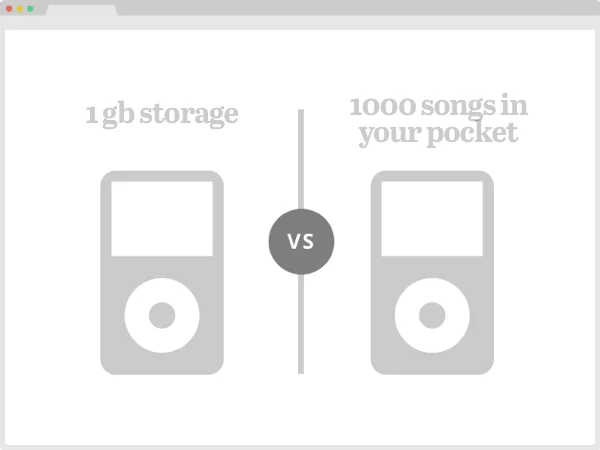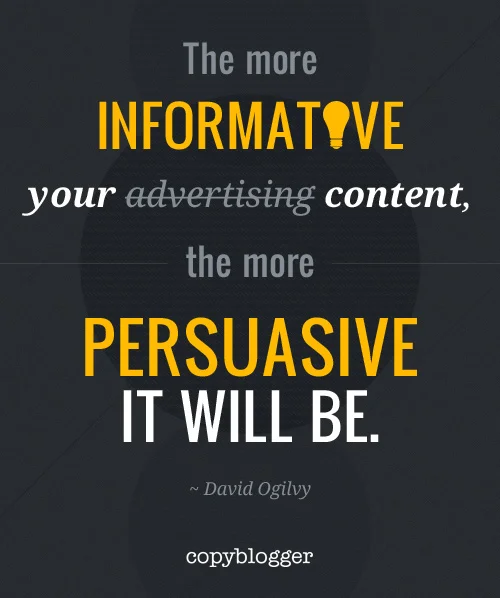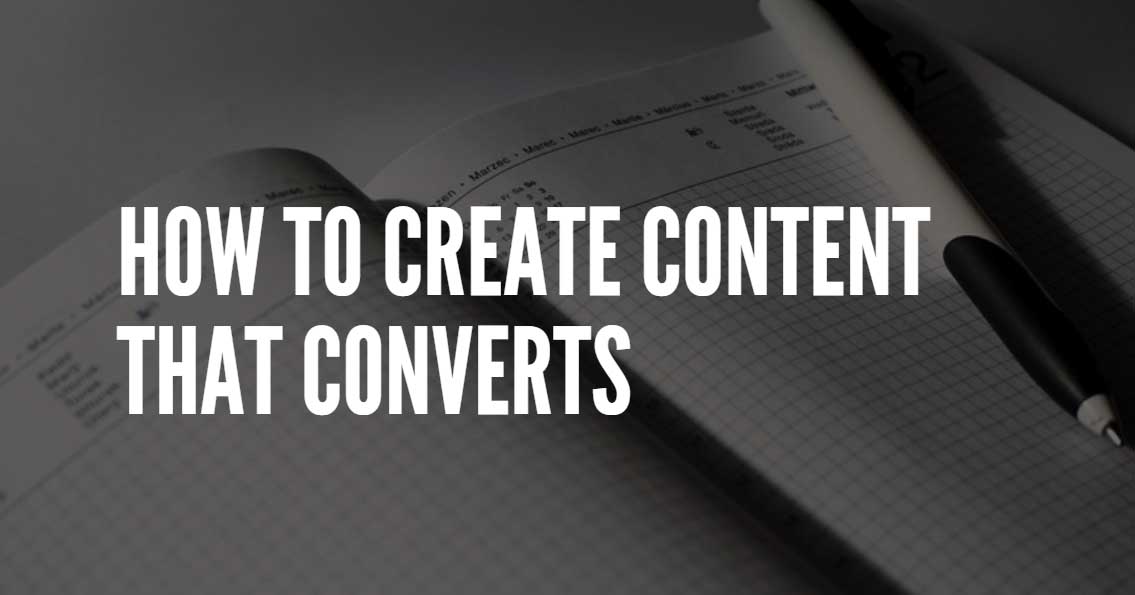What exactly is copywriting?
Copywriting is the art of convincing with words. It’s a formidable weapon in marketing, for anyone who knows how to use it. In this article, I give you the keys to writing a good “copy”, relevant content that will push your reader to take action.
It is the art of using words to convince, and therefore convert. It’s persuasive writing. The goal is to get the reader into action.
Why copywriting?
To differentiate you! Without good copywriting, you will not stand out from your competitors, even with the best marketing strategy on Earth. Remember: everyone creates content!
Used wisely, your words, your phrase turns can make a big difference.
Thus, well-copywritten content can significantly improve your conversion rates on your sales pages, increase the opening and response rate of your emails or even increase your engagement rate on your social networks.
Copywriting is essential if you want to perform!
However, the exercise is not simple. Everyone can write – we learned it at school – but few can write a hard-hitting and engaging text.
In this article, I will therefore give you the keys to write a good “copy” whatever the medium (email, landing page). Follow the guide.
Copywriting: good preparation
To write a good copy, you must prepare well.
Understand your target

Content that does not speak to the right person will never convert!
Before you start writing, find out about your target: Their wants and problems, cravings, expectations, goals, etc. And above all, on their way of expressing themselves. Your words will have to touch it, and it is by using their vocabulary that you will succeed.
What to do?
You can directly question your current prospects/clients. They must speak with their words. You can send a form by email with Typeform or Google Forms for example, or you can organize a small call. In this case, I advise you to record your conversation to transcribe his words. However, ask for its opinion beforehand.
Also, request your connections on LinkedIn. Ask them about their situation, their problems. People love to tell their lives, enjoy it! You will collect very interesting testimonies to exploit.
You can go get customer reviews of your competitors (Google, Amazon, Trustpilot). Gold mines!
Also, don’t hesitate to go on social networks (Facebook groups, Instagram pages) – some comments are real nuggets – and on forums like Reddit and Quora.
Another place for your prospecting: the sites of your competitors. The latter may have done this research job. Spy but don’t copy!
Finally, look at your competitors’ advertising campaigns on Google and Facebook with Facebook Ads Library. Just type your competitor’s name in the search bar, and the site will display all of its current broadcast advertisements.
Define your value proposition
Your value proposition is your promise. It must be clear and – of course – attractive. It is she who will capture attention.
Define your goal
Before writing, clearly define your goal. What are you looking for with your content? The question is simple, but many people write blindly. Result: their text is not relevant.
This step is also important if you want to contact journalists.

How to write a good copy
Now let’s go-to writing. The “rules” are numerous but here are the main ones.
Write a “slippery” text
Do you know the “slippery slide”? This concept was invented by the copywriter Joseph Sugarman. The principle is simple.
The title is so impactful …
Read the first line of the text. It’s so captivating …
You read the second line. And then…
The third line.
The fourth line.
In short, you understood.
You slide little by little.
You bring the reader to read all of your content.
So write your text as a “slippery slide”.
Write for your target
When writing content, keep in mind that you are not writing for yourself, but for your reader. Hence the importance of learning beforehand about its audience.
In your writing process, put yourself in the place of your target and answer these two questions: “How does this concern me ? “,” What do I gain from it? “
Most often use “You”.
If you abuse “We”, your reader will not feel concerned.
Talk about benefits, not functionality

“Here is a cooking robot with 12 automatic programs and a professional engine of 1600 W”. Do you want to buy it? No.
“Here is a super powerful cooker robot for cooking everything from the entree to dessert.”. Do you want to buy it? Yes.
In the first example, I presented the functionality of the product. And let’s be clear, it doesn’t make you want. We don’t project ourselves! In the second example, I highlighted the benefits of the robot, namely the consequence of its use. And there, we project ourselves easily. We imagine concocting good dishes with a single device.
Purchasing decisions are made on profits and not on functionalities. In your content, you can of course talk about the characteristics, but think about always highlighting the benefits.
Tip: on a notebook or on your computer, list all the functionality of your product/service and transform them into profits.
The author and copywriter Robert W. Bly takes the example of a pencil :
“A pencil is a wooden cylinder” vs “Can be sharpened as many times as possible to write”
“A cylinder is hexagonal” vs “Don’t roll on the table”
“The pencil is 0.7 cm in diameter” vs “A good grip” Etc.
Be simple
Write short and concise sentences.
Remember that your goal is to get a message across and convince. If you get into big tirades, you will lose your reader.
“We know that sentences are better than paragraphs. That two paragraphs are better than five. And that simple words are better than difficult words. It’s a question of bandwidth: the more we reduce the amount of information in an idea, the more adhesive it is. “
Chip and Dan Heath
Also, be simple in your writing. You are not Proust, and fortunately. Your content must be understandable by all. Write as you speak, avoiding the familiar language of course.
Create emotion
Our decisions are mainly made emotionally. It is our emotions that guide us. Next comes logic.
A good copy must then arouse emotion.
Above all, create empathy. Show that you understand your reader’s problem.
Do not hesitate to put a little “heat” in your writing to establish proximity to your reader. Feeling closer to you, he will be more sensitive to your arguments and more inclined to trust you.
You can also play on fear …
FOMO for Fear of Missing Out is a widely used concept in copywriting. You put forward an opportunity not to be missed. Example: “Take advantage of -30% before Friday”, “Limited stocks”, “Free test for the first 500 registered”. Please note that your proposal must be real. Never fool your target.
Or on envy.
Use the “Social Proof” or social evidence. Show that many people have purchased your product/service or have registered for your newsletter. Human beings are like that, they want to do like everyone else. This social proof also reassures.
Example:
To arouse several emotions at the same time, there is a technique: storytelling. You tell a story.
- A start
- A problem arises
- A character arrives but cannot solve the problem
- You come to the rescue and everything is back to normal
- An end that ends well
Here, the reader goes through several emotions: worry, relief, joy.
You can also tell your story to arouse, for example, compassion. Show your reader that you too have been there that you have had the same problem as him.
Avoid spelling mistakes
Many contents still contain spelling and grammar errors. The English language is not simple – I also tear my hair out – but a text that contains faults loses all its credibility.
To avoid this, be aware that there are correction tools. Among them is Grammarly.
Another practical tool: the electronic synonyms dictionary (Crisco)
Read its contents out loud
Once your text is written, read it out loud. You will see right away if your content is fluid. If it gets stuck, rewrite it.
Copywriting: several methodologies

There are several frameworks to improve your persuasiveness. Here are three:
A.I.D.A
A.I.D.A is the acronym that means Attention, Interest, Desire, and Action.
This framework can be used for everything: newsletter, landing page, email, etc.
Warning. You capture the attention of your reader. Your goal is for him to read more. On a landing page or on a home page, this is your title, subtitle and your image. The famous “Hero Section”.
On an email and a newsletter, this is the object. On a Facebook advertisement, this is usually the picture. And on a post on LinkedIn / Instagram, this is the first sentence, the catchphrase.
Interest. Suscitate interest by demonstrating that your solution/product is intended for it. You talk about his problems, and you list your benefits.
Desire. Mount the sauce. Show him the after-use of your solution/product. Here you can put testimonies, references, figures or even proof of authority. Example: an influential person in your area who talks about you.
Action. Push your reader into action. Use action verbs like “Register”, “Download”, “Buy”
P.A.S
P.A.S stands for Problem, Agitate, Solve.
This framework works on landing pages, advertisements, and emails.
Problem. Here you describe the problem.
Agitate. You move the knife in the wound. You insist once again on the problem by mentioning the consequences. Do not talk about your solution yet.
Solve. Finally, present your solution. You can tell your reader that your product/service will change their life.
The 4P or P.P.P.P
P.P.P.P is the acronym for Picture, Promise, Prove and Push.
Picture. Project your reader by presenting your benefit. Make him imagine what his life would be like without his problem.
Promised. It’s your promise. What your product/service will bring him.
Prove. Credibilize your promise with testimonies, figures, references.
Push. Finally, encourage your reader to take action.
Advice: if you have trouble using these frameworks, just tell yourself that you have to take your reader by the hand, bring it from point A to point B. When I write content, I imagine myself saying to the reader: “Come on, get on the train. The destination will please you ”. And if you have read so far, it is because I have successfully completed my job ⁇

Tools that generate content for you
Tools to automatically create content have emerged in recent months. With a simple title or keyword, they offer you a text.
But what about these tools based on AI for copywriting? Out of all I’ve tested, Jasper Ai is probably one of the best on the market at the moment.
It’s up to you to play now. You have the keys to making good content
Note that copywriting is a discipline that requires practice, a lot of practice. The more you practice, the more you will improve!




